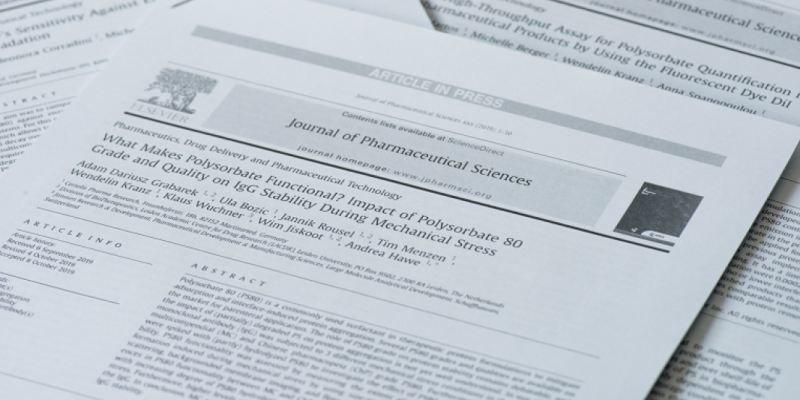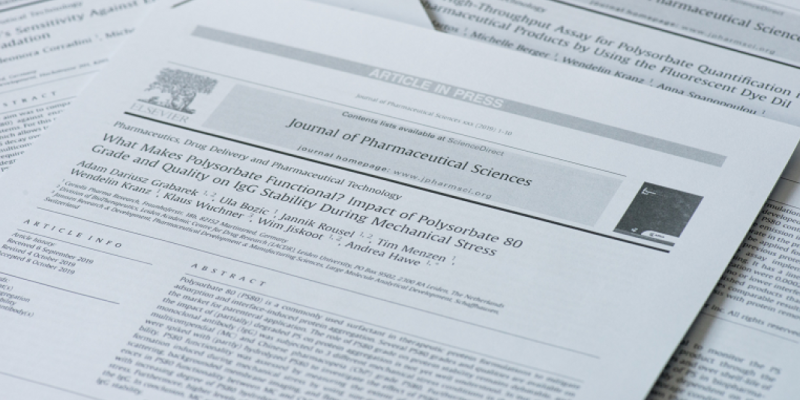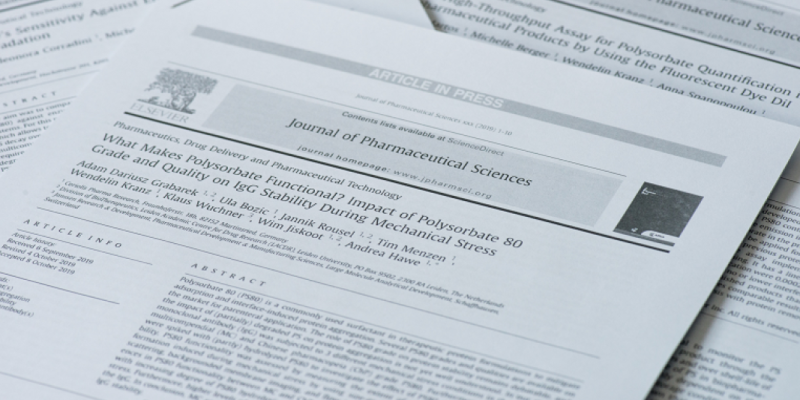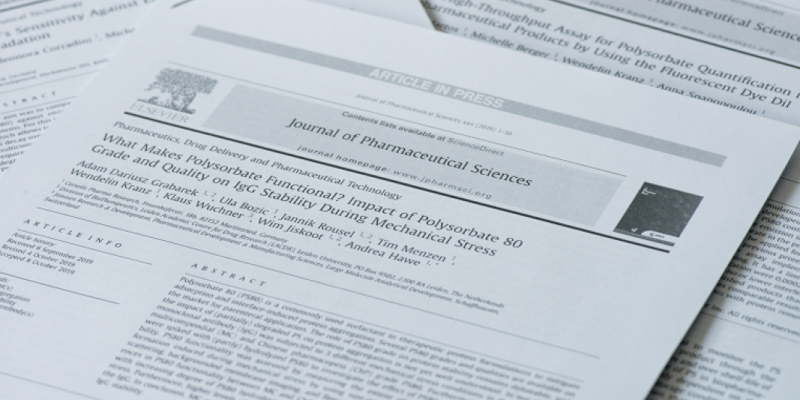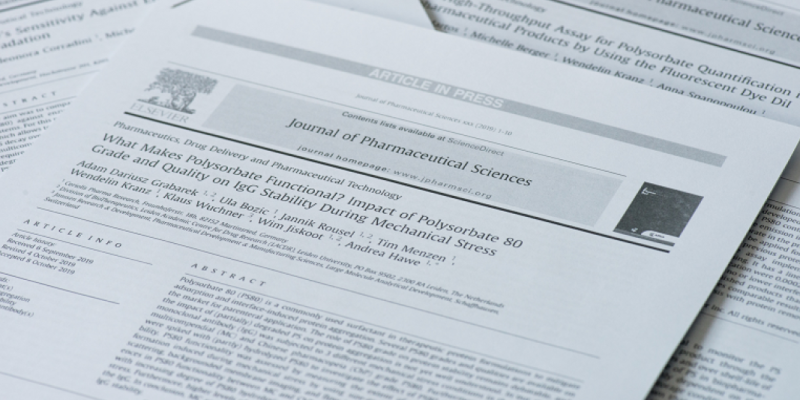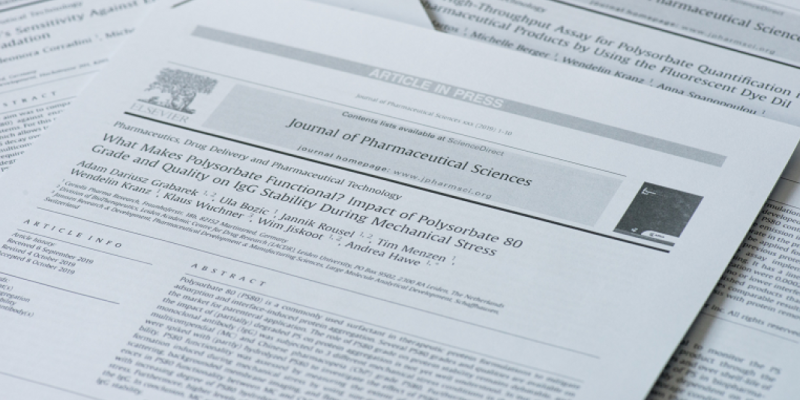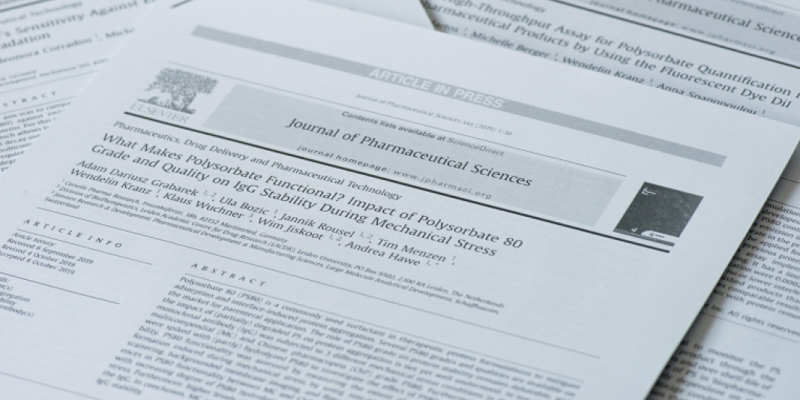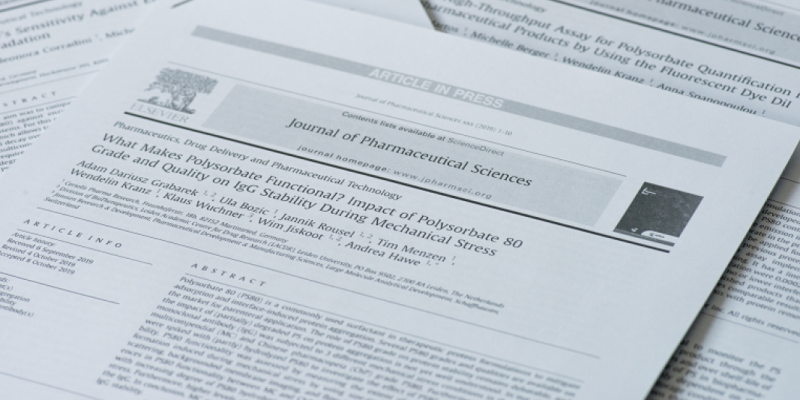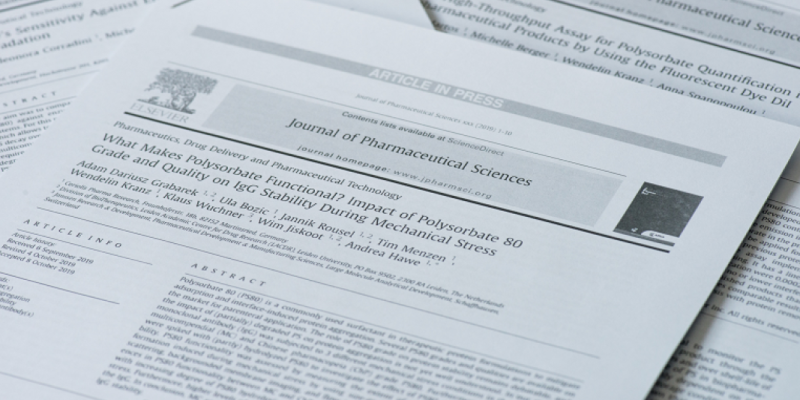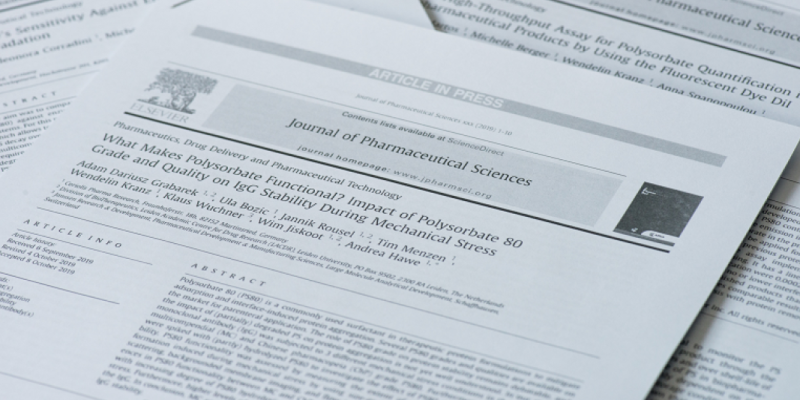Particles in Biopharmaceutical Formulations, Part 2
J Pharm Sci. 2022 Jan.
Particles in Biopharmaceutical Formulations, Part 2:
An Update on Analytical Techniques and Applications for Therapeutic Proteins, Viruses, Vaccines and Cells
Particles in biopharmaceutical formulations remain a hot topic in drug product development. With new product classes emerging it is crucial to discriminate particulate active pharmaceutical ingredients from particulate impurities. Technical improvements, new analytical developments and emerging tools (e.g., machine learning tools) increase the amount of information generated for particles. For a proper interpretation and judgment of the generated data a thorough understanding of the measurement principle, suitable application fields and potential limitations and pitfalls is required. Our review provides a comprehensive overview of novel particle analysis techniques emerging in the last decade for particulate impurities in therapeutic protein formulations (protein-related, excipient-related and primary packaging material-related), as well as particulate biopharmaceutical formulations (virus particles, virus-like particles, lipid nanoparticles and cell-based medicinal products). In addition, we review the literature on applications, describe specific analytical approaches and illustrate advantages and drawbacks of currently available techniques for particulate biopharmaceutical formulations.
Keywords: Biopharmaceutical characterization., Lipid Nanoparticle(s) (LNP), Microparticle(s), Nanoparticle(s), Particle size, Protein(s), Protein aggregation, Protein formulation(s), Vaccine(s), Viral vector(s)
J Pharm Sci. 2022 Jan.

